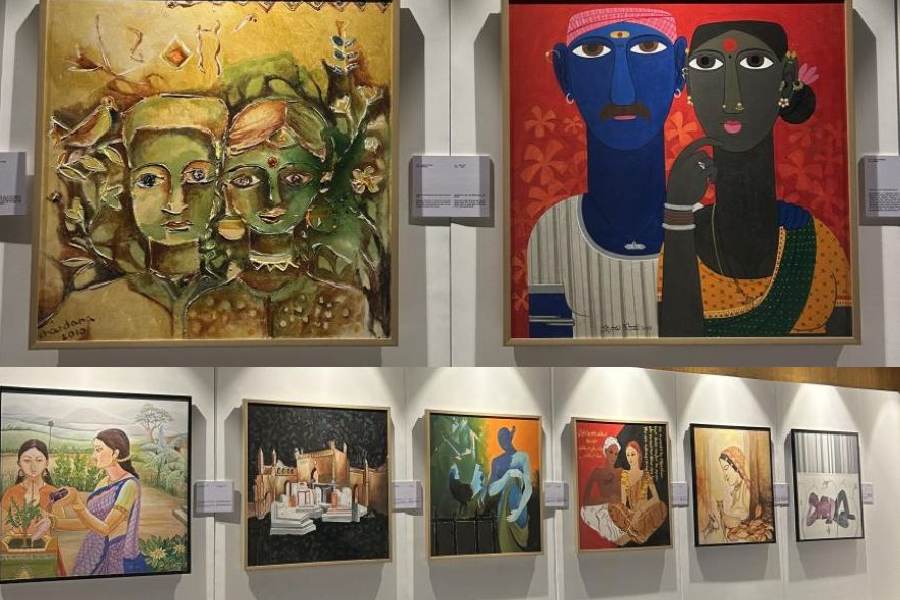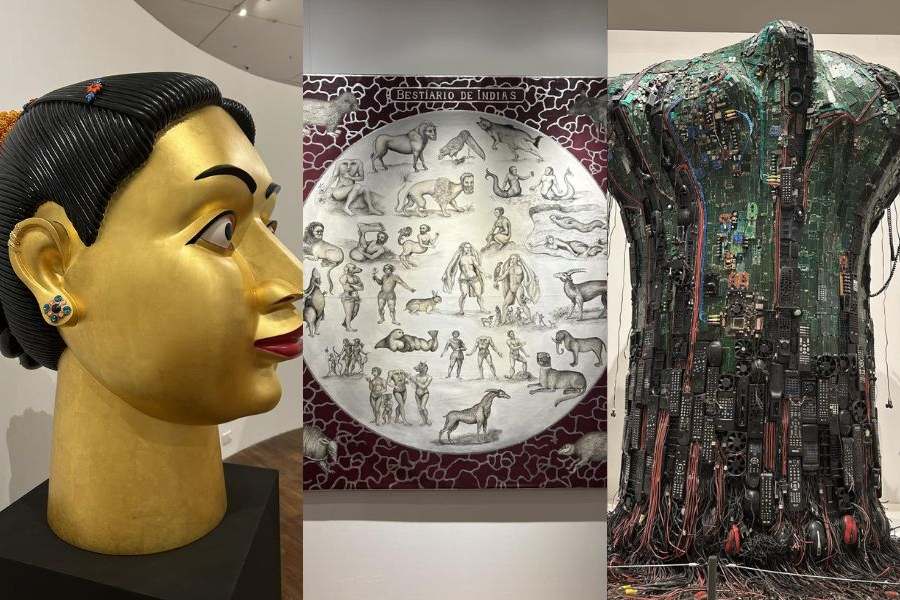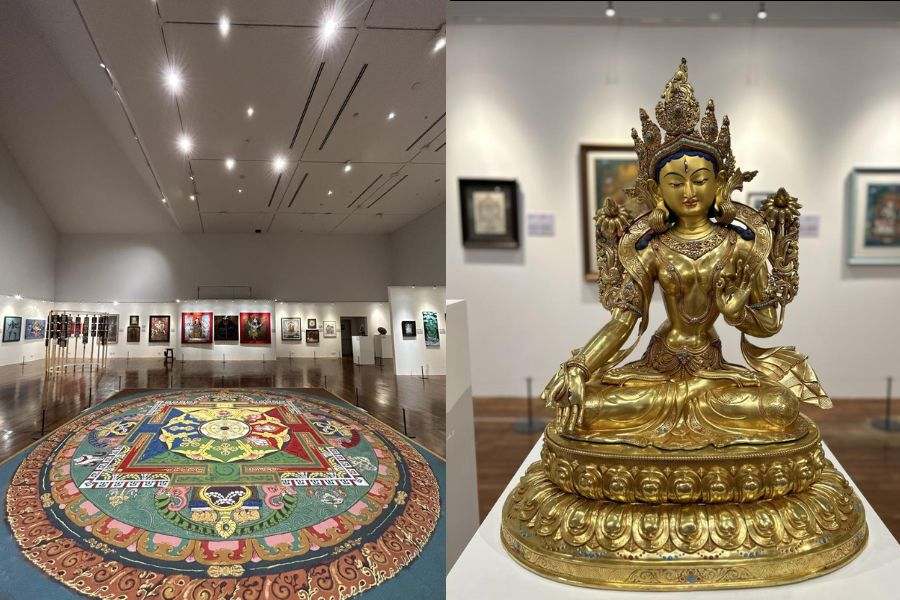Bihar Museum is changing the narrative of museums. From being a place of the forgotten and forgone, it is changing to a dynamic hub for new ideas, new people and future-forward perspectives. And the Bihar Museum Biennale, a first of its kind organised inside the museum, from August 7, set the tone for that. While the first edition in March 2021 had set the ball rolling, with a hybrid version leaning more towards the digital format due to the pandemic, it’s the second edition that brought the idea to its full fruition. And the Bihar Museum buzzed with the energy of artists from India and abroad and opened the gates for a deluge of new ideas that will change the way museums are perceived in India.
The art extravaganza, presented by the Bihar government’s Department of Art, Culture, and Youth, had historian and curator Alka Pande as its chief curator. It coincided with the Foundation Day of the museum and G20 Art Exhibition, Together We Art, which made the museum a cauldron of cultures.

On August 8 and 9, symposiums were held that made for enriching sessions. On the first day, Prof Yannick Lintz, president of the Guimet National Museum of Asian Arts, Paris, led the talk on Curatorial Strategies and Displays in the museum. The other talk centred around Changing Creative Industry in Museum that included panellists like Pheroza Godrej, founder of Cymroza Art Gallery, Mumbai; Rakhi Sarkar, founder, CIMA Art Gallery, Calcutta; and was moderated by Saryu Doshi, art scholar, historian and curator.

The Chhatrapati Shivaji Maharaj Vastu Sangrahalaya (CSMVS) showcased a rich tapestry of Tanjore paintings in an exhibition titled ‘Three Dimensions of Divinity — Thanjavur Art Revealed’ that paid tribute to the unique layering technique of the art form. Another display titled ‘Modern Indian Painting’ by the Salar Jung Museum showcased the culture of Telangana through an artistic lens.

Craftsmanship native to Bihar was on display and gave visitors a glimpse of the rich repository of the region. The exhibition featured the works of six Padma Shri awardees hailing from Bihar. An amalgamation of Maithili Art, papier-mache art, and Bawan Buti art, it showcased the artwork of Jagdamba Devi, Baua Devi, Godavari Dutta, Dulari Devi, Subhadra Devi and Kapil Devi Prasad.

(L-R) The exhibition by Costa Rica had a small display of artwork including paintings and handicraft.
Russia’s Mystic Universe, an immersive show, was a delight both for the children and adults. With its grand display that projected animated films on Indian Vedic life and stories on Lord Krishna, it attracted long queues.
Cheap Rice by Subodh Gupta greeted everyone outside the Museum’s gift shop.

(L-R) Anjani Kumar Singh; Alka Pande
“Bihar Museum is one of the architectural splendour in post-Independent India. It serves as a testament to the enduring legacy of this land, showcasing the creative genius that has blossomed in these very surroundings. The Museum Biennale aspires to shape cultures, foster meaningful discussions, and elevate the museum space into a dynamic realm. At the Bihar Museum Biennale, we view museums as dynamic laboratories of ideas, fostering the generation of knowledge systems and facilitating cultural dialogues between objects and viewers. This unique platform serves as an avenue for sharing histories and strategies” — Anjani Kumar Singh, director general of the Bihar Museum.
Chief curator and artistic producer of the Bihar Museum Biennale, Alka Pande, said, “Museums, once thought of as places of antiquity where visitors merely stand before lifeless, fossilized objects with little engagement, have evolved significantly. Personally, my perspective has been transformed through my involvement with the Museum Biennale and my exploration of the deeper meaning behind museum collections. I now see museums as extraordinary platforms — true laboratories of ideas. The visitor experience they offer goes far beyond passive observation. The Bihar Museum Biennale stands as a remarkable example of this phenomenon, as it not only showcases beauty but also represents the diverse and pluralistic culture of India.”

(L-R) Ravinder Reddy, Adriana Bustor, Argentina and Sanatan Dinda
The G20 Exhibition: Together We Art showcased the works of 19 artists from G20 member nations and nine guest countries. India also being a G20 member showcased the works of 20 artists from diverse spectrums, with an artwork from each of them. From climate change to gender inclusion, migration to identity, and global oneness to materiality, the multi-sensorial and experiential exhibition created the most intricate patterns of human understanding, woven through the web of ideas. Works of prominent Indian artists spanning mediums — paintings, installations, ceramics, were showcased. Indian artists like Jayasri Burman, Seema Kohli, Subodh Gupta, Sudarshan Shetty, Arpana Caur, G.R. Iranna, Paresh Maity, Raghu Rai, Ravinder Reddy, Sanjay Kumar, Chandra Bhattacharjee, Rajat Ghosh, Jayashree Chakravarty, Sanatan Dinda, K.S. Radhakrishnan, Ayesha Seth Sen, Himmat Shah, Bose Krishnamachari, Sunil Padwal and P.R. Daroz showcased their works. International artists included works of We Weishan from China; Thijs Biersteker from the UK; Thalente Khomo from South Africa; Sara Sejin Chang from the Netherlands; Robert Zhao Renhui from Singapore among others.

(L-R) Sudarshan Shetty’s installation Taj Mahal attracted everyone with its uniqueness; Paresh Maity

The Nepal Art Council brought the stunning exhibition ‘Nepal: Where The Gods Reside’ to the biennale. Through over 70 artworks that included paintings, sketches and installation art and sculptures, the display was a peek into the Himalayan nation’s art and culture.
